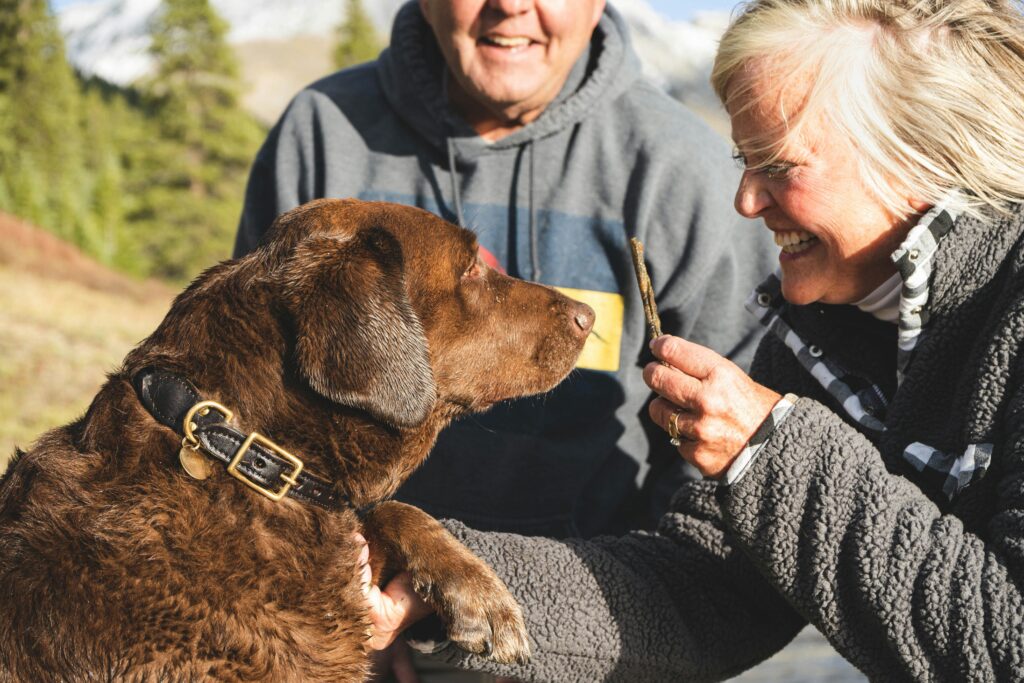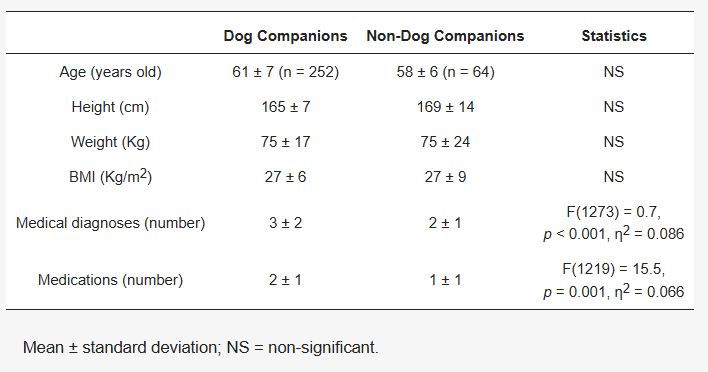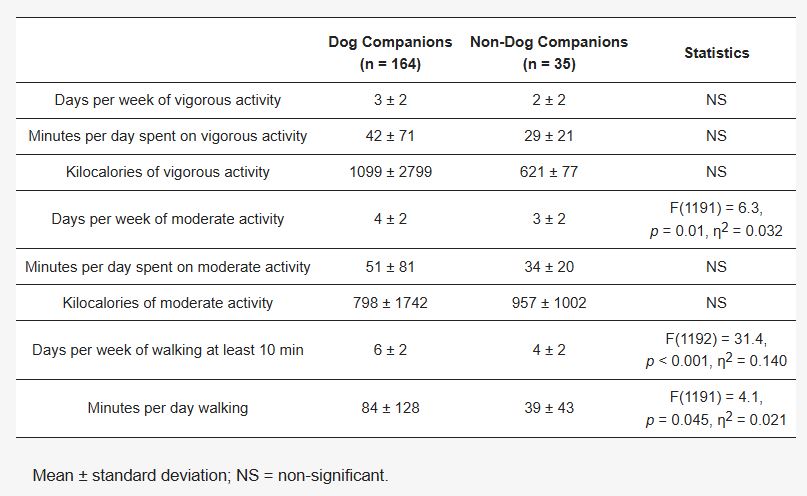
1. Introduction
Dog Companionship: A Path to Happiness and Better Health
Owning a dog is more than having a cute companion to share your home with—it’s a lifestyle upgrade that touches your heart, mind, and body. For women over 50, the benefits of dog companionship are even more profound. According to a study by Kluess and Jones (2024), women who own dogs walk significantly more and report feeling happier with their lives compared to those who don’t.

Imagine this: having a furry friend who not only motivates you to stay active but also helps you build deeper social connections. These findings emphasize that dog companionship can be an essential factor in healthy aging and overall wellness.
What Makes Dog Companionship So Special?
Dog companions stand out as they don’t just encourage physical activity; they become a source of emotional and mental support. As Garcia et al. (2015) observed, dog owners, particularly postmenopausal women, are more likely to meet recommended weekly walking guidelines. This simple act of walking can lead to a cascade of health benefits, contributing to a more fulfilling and active life.
Dog companionship goes beyond physical benefits—it’s about the bond, the connection, and the life-changing impact a dog can have.
2. Dog Companionship: Physical Health Benefits
Walking Towards Better Health
Have you ever noticed how having a dog makes you want to go for that extra stroll around the neighborhood or visit the park more often? The study by Kluess and Jones (2024) found that women over 50 who own dogs walk far more frequently than those who don’t. Dog companions walk an average of 326 minutes per week—nearly double the time spent by non-dog owners.
Medical Diagnoses Reported by Participants
| Medical Diagnoses | Dog Companions | Non-Dog Companions |
|---|---|---|
| Alzheimer’s disease | 0 | 1 |
| Heart failure | 0 | 2 |
| Prostate problems | 0 | 0 |
| Bleeding disorder | 1 | 0 |
| Heart attack | 1 | 2 |
| Atrial fibrillation | 2 | 2 |
| Heart disease | 3 | 2 |
| Jaundice/liver disease | 3 | 1 |
| Kidney disease | 3 | 1 |
| Seizure/epilepsy | 4 | 0 |
| Stroke | 4 | 0 |
| Ulcers | 5 | 4 |
| Glaucoma | 6 | 2 |
| Hip replacement | 6 | 2 |
| Urinary incontinence | 8 | 1 |
| Irritable bowel syndrome | 14 | 2 |
| Colon polyps | 15 | 3 |
| Osteoporosis | 16 | 5 |
| Knee replacement | 18 | 0 |
| Osteopenia | 18 | 4 |
| Anemia | 19 | 10 |
| Hemorrhoids | 20 | 5 |
| Other | 23 | 0 |
| Cataracts | 27 | 4 |
| Diabetes/prediabetes | 28 | 0 |
| Asthma | 29 | 9 |
| Heart burn | 29 | 5 |
| Cancer | 32 | 1 |
| Anxiety | 45 | 5 |
| Thyroid disease | 45 | 7 |
| Depression | 50 | 3 |
| High cholesterol | 50 | 8 |
| Migraines/headaches | 55 | 3 |
| High blood pressure | 60 | 13 |
| Arthritis | 77 | 11 |
Dog Companionship Boosts Walking Frequency and Duration
| Physical Activity Metrics | Dog Companions | Non-Dog Companions | Statistical Significance |
|---|---|---|---|
| Days per week walking | 6 ± 2 | 4 ± 2 | p < 0.001 |
| Minutes per day walking | 84 ± 128 | 39 ± 43 | p = 0.045 |
Regular walking helps combat the risks that come with aging, like obesity and hypertension. This boost in activity makes dog ownership an effortless way to stay physically active—and have fun while doing it!
Dog Companionship: A Healthier Heart and Body
Staying active with your dog is not just a fun pastime; it’s essential for long-term health. Walking more days per week and maintaining moderate activity can significantly lower risks of chronic illnesses such as cardiovascular diseases. Studies like those by Krittanawong et al. (2020) have shown how pet ownership contributes to reduced risks of hypertension and better physical health.

For women over 50, who are often more vulnerable to aging-related health issues, dog companionship is an effective way to keep moving and stay healthy. Owning a dog inspires regular activity—and it’s an enjoyable way to fight against a sedentary lifestyle.
3. Mental and Emotional Well-Being
How Dogs Make Life Happier
Dogs have an incredible way of brightening our lives. For women over 50, owning a dog doesn’t just mean extra wagging tails and playful moments—it translates into greater life satisfaction. In the study by Kluess and Jones (2024), dog owners consistently scored higher on the Satisfaction with Life scale compared to those without furry companions.

Why is this the case? Dogs are fantastic at providing emotional support. For many women, especially as they age, dogs become loyal friends who fill homes with warmth and companionship. While dog sports didn’t necessarily bring extra boosts in happiness beyond regular dog ownership, just having a dog around creates an undeniable sense of joy and purpose.
Better Social Skills, Thanks to Dogs
It turns out that owning a dog can also make you better at interacting with other people. The study found that dog companions scored higher in empathy (the ability to understand others’ emotions) and immediacy (being approachable and open to communication). For example:
- Empathy scores: Dog companions scored 11 ± 1.6, while non-dog companions only scored 9.5 ± 1.7.
- Immediacy scores: Dog companions scored 12.6 ± 1.8, compared to 10.2 ± 2.7 for non-dog companions.
Walking your dog or taking them to the park naturally leads to social interactions—smiling at other dog walkers, chatting with neighbors, or connecting with fellow dog enthusiasts. Over time, these connections improve your social skills and help reduce feelings of isolation. For women navigating later stages of life, this increased sense of connectedness can make a world of difference.
Why This Matters
Dog companionship isn’t just about having a pet—it’s about creating a healthier, happier mental state. Whether it’s through playful moments, daily walks, or shared quiet evenings, dogs remind us to live in the moment. They’re not just companions; they’re emotional anchors.
4. Role of Dog Sports
The Rise of Dog Sports
Dog sports are becoming increasingly popular. From agility courses to scent tracking, over 3 million entries in canine sports events were recorded last year alone. These activities not only challenge dogs physically but also strengthen the bond between owners and their pets. For women over 50, participating in these events brings a sense of community and fun.
But What About Health Benefits?
While dog sports sound like they’d bring major health and happiness perks, the study by Kluess and Jones (2024) didn’t find much difference between women who participated in these activities and those who didn’t. Dog sports enthusiasts didn’t report higher physical activity levels, better fitness, or greater life satisfaction than other dog owners.
What does this mean? Simply owning a dog and spending time with them—whether through sports or regular care—is enough to enjoy the full benefits of dog companionship. Dog sports might add a layer of enjoyment, but they don’t necessarily boost measurable outcomes like fitness or happiness.
5. Barriers and Motivation for Dog Companionship
What Gets in the Way of Dog Walking?
Let’s face it: even the most dedicated dog lovers face obstacles to regular walks. According to the study, 63% of dog owners said weather was their number one challenge—think rainy days, scorching heat, or icy sidewalks. Other hurdles included busy schedules, physical limitations, or a lack of safe outdoor spaces.
But here’s the good news: despite these challenges, most dog owners find ways to stay consistent. They’re motivated not just by responsibility but by the joy of seeing their dog happy.
What Keeps Dog Owners Motivated?
When asked why they walk their dogs, owners pointed to three main reasons:
- Personal Health: Walking their dog gets them moving and feeling better physically.
- The Dog’s Health: A healthy dog is a happy dog, and owners are committed to their pets’ well-being.
- The Dog’s Happiness: Nothing beats seeing a dog wag its tail in excitement during a walk.
For dog companions, this mutual relationship of care and motivation makes it easier to push through barriers and maintain a healthy routine. The bond with their furry friend becomes a powerful driving force for engagement and activity.
6. Broader Implications of Dog Companionship
Dogs Make Life Better for Everyone
Dog companionship isn’t just a win for women over 50—it’s a universal gift that brings joy, health, and connection to people of all ages and backgrounds. For younger adults, dogs are motivators for responsibility and staying active. Imagine coming home to a dog wagging its tail, ready for a walk—it’s hard to say no! Studies like those by O’Haire (2010) have found that owning pets helps younger people manage stress and boosts their physical activity levels. Dogs remind you to get moving, even if all you feel like doing is lounging.
Older men benefit from dog companionship in equally powerful ways. Dogs often become their best friends, offering comfort and purpose during retirement years. Research by Aiba et al. (2012) shows that pet ownership can help regulate stress and improve heart health, especially for people dealing with conditions like diabetes or high blood pressure. The bond between man and dog is simple but transformative—it’s about feeling needed and staying connected.
The Amazing Health Boosts of Owning a Dog
Let’s not forget the incredible health perks that dogs bring to the table. Across every age group, dog companionship has been associated with:
- Stronger Hearts: Studies like those by Krittanawong et al. (2020) have shown that dog owners have lower risks of hypertension. Walking your dog regularly is great cardio—and great for your heart health!
- Calmer Minds: According to McConnell et al. (2011), dogs can ease anxiety and provide emotional stability. Their loyal and loving presence helps reduce feelings of stress and promotes mindfulness.
- Lower Blood Pressure: Owning a dog has been linked to better blood pressure control, especially during stressful situations. Anderson et al. (1992) found that pet owners generally maintain healthier blood pressure levels than non-owners.
Whether it’s a young adult needing motivation or an older adult seeking emotional support, dogs make life better in countless ways.
7. Future Directions in Research
What’s Next for Dog Companionship Studies?
We’ve learned so much about how dogs impact our lives, but there’s still more to uncover. For example, how does owning a dog affect your hormones, like cortisol or oxytocin? Could it improve sleep quality or help with chronic pain? These are questions researchers are keen to explore further. The study by Kluess and Jones (2024) also highlights the importance of factoring in socioeconomic status, living environments, and family structures when studying dog companionship. These details could shed light on how and why people benefit from having dogs in different ways.
Another fascinating area for future research is examining how dogs impact teenagers, caregivers, or people with disabilities. Could dogs be integrated into therapy programs or used to enhance social connections for isolated individuals? There’s so much potential to expand our understanding of how dogs contribute to human health and happiness.
Why Research Needs to Stay Credible
To truly make an impact, future studies must focus on credibility and transparency—following the principles of Expertise, Authoritativeness, and Trustworthiness (EEAT). This means conducting high-quality research with solid methodologies, publishing results in peer-reviewed journals, and making data accessible to the public. A great example is the dataset provided by Kluess and Jones (2024), which is openly available for further analysis.
By prioritizing these values, researchers can continue building trust and promoting awareness of the powerful benefits of dog companionship.
8. Conclusion
Dogs Make Life Healthier and Happier
From their ability to get us moving to their knack for lifting our spirits, dogs make life better. As revealed by Kluess and Jones (2024), women over 50 who own dogs experience higher levels of physical activity, improved mental well-being, and greater life satisfaction. But the benefits don’t stop there—dog companionship helps people of all ages, providing emotional support, better heart health, and lower stress levels.
Considering Dog Companionship? Go for It!
If you’ve ever thought about adopting a dog, let this be your sign. They’re more than just pets—they’re motivators, friends, and sources of joy. Whether you’re looking for an exercise buddy or simply want to experience unconditional love, a dog could be the perfect addition to your life. Owning a dog isn’t just rewarding—it’s transformative for your health and happiness.
Reference
Kluess, H.A., & Jones, R.L. Health and Benefits of Dog Companionship in Women Over 50 Years Old. Journal of Ageing and Longevity, 2024, 4(1), 1-14. https://doi.org/10.3390/jal4010001.
License
This work is licensed under a Creative Commons Attribution 4.0 International License (CC BY 4.0). You are free to share, adapt, and build upon this material as long as appropriate credit is provided, a link to the license is included, and any changes are indicated. For more details, visit https://creativecommons.org/licenses/by/4.0/.
Affiliate Disclosure: This page may contain affiliate links, meaning I may earn a commission if you purchase through these links at no additional cost to you. The recommendations provided are based on research and are intended to offer value. The earnings help support the site’s operations and allow for continued content creation.